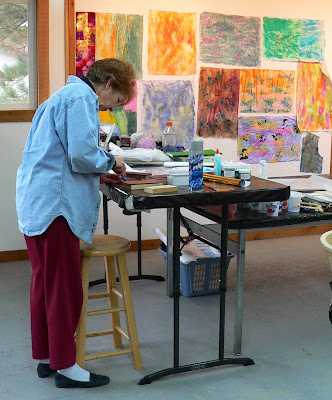
I've had an idea incubating the past couple of years and I think I have come close to solving the logistical problems involved. I would love feedback on this idea . . . . (just in case I am overlooking something significant).
I have long yearned for an appropriate local gallery space for my art as well as some kind of collaborative community for artists.
I happen to own an old brick building in a high traffic area of downtown that contains a vacant retail space of about 1000 square feet. It has been newly renovated with new paint and carpeting, etc. I am contemplating opening a cooperative gallery / studio. The front 2/3 would be the gallery, and the back 1/3 (divided by a wall) would serve a communal studio space for member artists. Member artists would pay monthly rent for use of their designated portion of the studio work space and gallery display area and would be required to staff the gallery one day per week, but would retain 100% of sales of their work.
I would like member artists to commit to a six month contract (converting to month to month thereafter) and to further agree to participate in regular organizational sessions for the purposes of problem solving, setting up displays, and light housekeeping.
My role would be to oversee the business of the gallery and I would plan to set up a work station in the studio area, with regular hours, in order to participate in the communal artistic process. I would need to establish and enforce protocol for shared studio space, and manage the other gallery consignments (60 / 40% for non-member artists).
I thought I would implement an application process for members requiring art samples, an artist bio, statement, references, and an interview. I would be seeking two to five compatible individuals who demonstrate a dedication to their art, are congenial and cooperative with others, reliable, and enthusiastic about presenting their work to the public. I would be most interested in finding artists working with textiles, jewelry, ceramics, assemblage, ceramics or collage, etc. These medium are not well represented in galleries in this area, currently (most galleries have western and wildlife art, bronzes and the like).
No name yet for this venture. I would love to hear your thoughts and suggestions.

























































